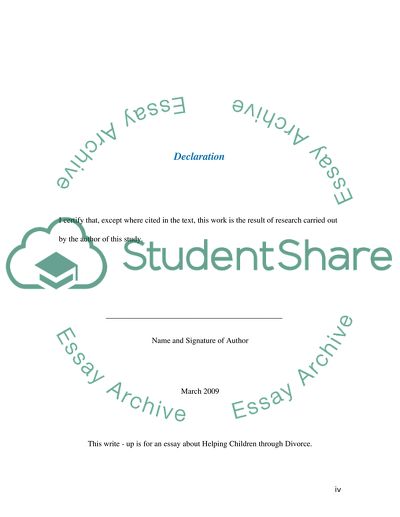Cite this document
(“Helping Children through Divorce Essay Example | Topics and Well Written Essays - 2500 words”, n.d.)
Retrieved from https://studentshare.org/miscellaneous/1552167-helping-children-through-divorce
Retrieved from https://studentshare.org/miscellaneous/1552167-helping-children-through-divorce
(Helping Children through Divorce Essay Example | Topics and Well Written Essays - 2500 Words)
https://studentshare.org/miscellaneous/1552167-helping-children-through-divorce.
https://studentshare.org/miscellaneous/1552167-helping-children-through-divorce.
“Helping Children through Divorce Essay Example | Topics and Well Written Essays - 2500 Words”, n.d. https://studentshare.org/miscellaneous/1552167-helping-children-through-divorce.


